Rising at Plynlimon in the Welsh mountains and discharging into the Severn Estuary below Chepstow the Wye is the fifth longest river in the UK; designated as a Site of Special Scientific Interest (SSSI) and with much of the lower valley an Area of Outstanding Natural Beauty it is rightly regarded as one of the most visually stunning waterways in the country.
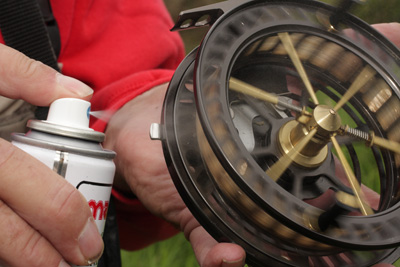 Although long regarded primarily as a game river the Wye is arguably the best stocked river coarse fishery in the UK with a massive biomass of coarse species present and with relatively light angling pressure many of the fish remain uncaught.
Although long regarded primarily as a game river the Wye is arguably the best stocked river coarse fishery in the UK with a massive biomass of coarse species present and with relatively light angling pressure many of the fish remain uncaught.
It was to a spectacular section of the river below Hereford that FishingMagic met up with Bob James to get an insight into how he approaches the river; not on this occasion for its numerous barbel – which run to 15lb in the section in question – but for the shoals of chub for which the river is also famous, with specimens running to well over the 6lb mark.
Much of the Wye is relatively shallow water over hard gravel, rocks and boulders with dense stands of Ranunculus and the occasional deeper pool and the fishing is largely by sight in crystal clear water but on the day in question the river was fining down after heavy rain and carrying a lot of colour – still fishable but decidedly tricky!
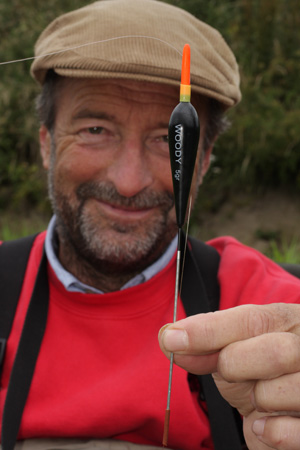 Despite the lack of clarity some of the shallower sections were still apparent and by studying the current patterns carefully it was possible to make out some of the deeper and steadier glides but Bob’s extensive knowledge of the river in more clement conditions proved invaluable and he was able to pinpoint precisely where the weed started, where the gullies ran and exactly where the water dropped off into the pools.
Despite the lack of clarity some of the shallower sections were still apparent and by studying the current patterns carefully it was possible to make out some of the deeper and steadier glides but Bob’s extensive knowledge of the river in more clement conditions proved invaluable and he was able to pinpoint precisely where the weed started, where the gullies ran and exactly where the water dropped off into the pools.
In times of high water most fish, certainly chub and barbel, only tend to move the minimum distance required to find a comfortable current and given the river conditions this probably only meant them tucking themselves a foot or two away from their usual location.
After a good look at a long length of river Bob identified the obvious swim as a long, deep far bank glide below heavily weedy shallows; the perfect area where the fish would sit waiting for the current to bring them a constant stream of invertebrates washed off the weed. A run of dense snags and overhanging trees to provide cover and slightly slacker water off the main pace added to the appeal of the area and although running a float tight to the structure would be challenging if there was a man who could do it then Bob was that man! Shallow water on the inside line meant Bob would be able to wade some way towards the target area but control in the zone would take a lot of skill.
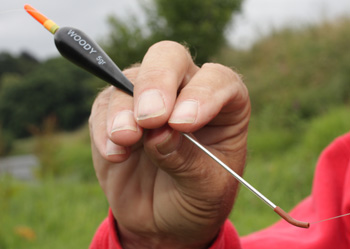 Bob’s first job was to give his centrepin a spin and the 4lb line a liberal squirt of line floatant. Bob explained that keeping the line above the float on the surface is one of the key factors in float control as a sinking line has a tendency to pull the float off course and a bait moving across the current is likely to be rejected by a spooky fish – even on the Wye with fish not used to being caught a bait behaving unnaturally is still likely to be rejected.
Bob’s first job was to give his centrepin a spin and the 4lb line a liberal squirt of line floatant. Bob explained that keeping the line above the float on the surface is one of the key factors in float control as a sinking line has a tendency to pull the float off course and a bait moving across the current is likely to be rejected by a spooky fish – even on the Wye with fish not used to being caught a bait behaving unnaturally is still likely to be rejected.
The next step was to pick the right float for the job and Bob opted for a chunky wire-stemmed Avon-style carrying 5g. The wire stem would provide great stability in the pacey and slightly turbulent water and the broad shoulders would give plenty of buoyancy to support the relatively large baits which Bob was planning to use.
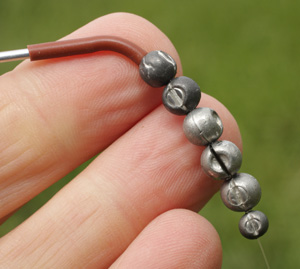 Rather than attach the float by the usual ‘double rubber’ method Bob fixed the top rubber and then slipped a short length of silicone tubing over the stem and explained: “The typical bottom rubber attachment works well enough but it does allow the bottom of the stem to snag easily – especially in weedy swims – this method gives a streamlined base to the float and prevents it hooking up, it’s a brilliant little edge and has saved me losing a lot of fish over the years.”
Rather than attach the float by the usual ‘double rubber’ method Bob fixed the top rubber and then slipped a short length of silicone tubing over the stem and explained: “The typical bottom rubber attachment works well enough but it does allow the bottom of the stem to snag easily – especially in weedy swims – this method gives a streamlined base to the float and prevents it hooking up, it’s a brilliant little edge and has saved me losing a lot of fish over the years.”
The shotting pattern was a fairly standard bulk pattern with all of the bulk shot touching to help prevent tangling. The bulk was set a little deeper than half the depth of the swim to get the bait falling through the water quickly with a couple of large droppers at the business end; one a foot or so above the hook, the other six inches up. The hook itself was a beaked point size 12.
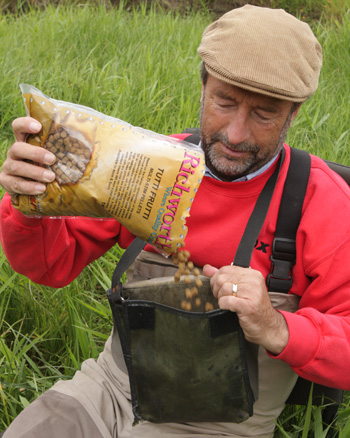 As far as bait for Wye chub is concerned Bob is a great believer in pellets and emptied a bag of 8mm Richworth Tutti Frutti Multi-Stim pellets into his bag before donning his waders, grabbing his catapult and wading across the shallows towards the drop off to the deeper water.
As far as bait for Wye chub is concerned Bob is a great believer in pellets and emptied a bag of 8mm Richworth Tutti Frutti Multi-Stim pellets into his bag before donning his waders, grabbing his catapult and wading across the shallows towards the drop off to the deeper water.
He put out a couple of ‘pult loads of pellets right at the head of the swim to prime the area and then ran the float through without a bait just to check the depth. A couple of adjustments saw it run through without dragging under and then it was time to band a pellet and put the first bait through.
A long rod with a fast tip is the perfect trotting tool giving the perfect means to mend the line behind the float to eliminate any bow in the line and give a perfectly straight line behind it and to keep as much line as possible off the water. Bob gave a couple of quick flicks of the tip and a touch on the reel before the float hit the likely ‘take zone’ to ensure it was travelling perfectly straight, the line laid out neatly behind it.
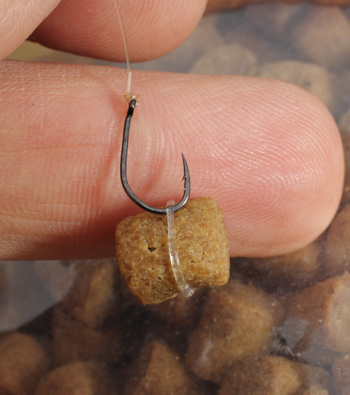 The need for the fast tip – to pick up the line quickly, even at distance – was readily apparent as the float buried just as it hit the water running alongside the snags and Bob showed his cat-like reflexes have not deteriorated any as he set the hook into a fish in a fraction of a second and held it hard on a tight to prevent it burying itself into the far bank snags.
The need for the fast tip – to pick up the line quickly, even at distance – was readily apparent as the float buried just as it hit the water running alongside the snags and Bob showed his cat-like reflexes have not deteriorated any as he set the hook into a fish in a fraction of a second and held it hard on a tight to prevent it burying itself into the far bank snags.
It looked touch and go for a few seconds but constant pressure finally paid off, the rod absorbed the lunges perfectly and the fish kited across into open water. With a good push of current it was still not all over as the water pressure on the fish was intense and it took time for Bob to steadily draw it upstream to his outstretched hand – no landing net here, the fish are simply picked up, unhooked (usually in the water) and then returned.
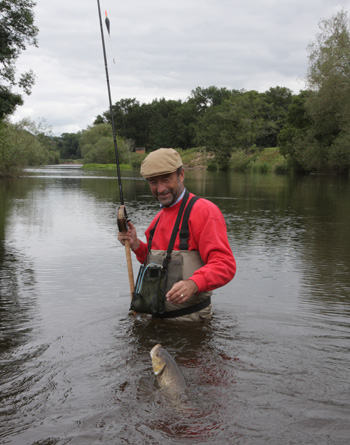 A spray of pellets every cast kept the fish coming and as time went on it was clear the chub were moving out of the cover and up in the water to intercept them falling through the water and Bob adjusted his line and depth accordingly.
A spray of pellets every cast kept the fish coming and as time went on it was clear the chub were moving out of the cover and up in the water to intercept them falling through the water and Bob adjusted his line and depth accordingly.
“It’s important” he explained, “to be aware of how the fish are reacting and to change your approach accordingly. These fish are now coming up to intercept the falling pellets so I can shallow up and fish more effectively – it’s much easier to cast and control a shorter line.”
The tactic worked and the fish kept coming to hand with one in every two or three runs through the swim producing a fish, most of the bites being violent but steady and deliberate as is often the case with fish which are feeding confidently.
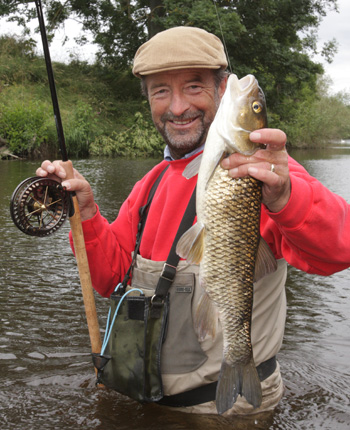 With the fish becoming more and more competitive in their behaviour Bob could probably have caught them all day long but after an hour or two he had taken several chub to around the 4lb mark and was beginning to set his sights on bigger things.
With the fish becoming more and more competitive in their behaviour Bob could probably have caught them all day long but after an hour or two he had taken several chub to around the 4lb mark and was beginning to set his sights on bigger things.
“I’m willing to bet a few barbel will have moved in at the tail of the swim to mop up any pellets the chub have missed by now” he said, “ I could try to get one on the float but it’s going to be tricky getting the bait to them through the shoal of chub so I’m going to set up a feeder rod and drop it at the very end of the swim!”
Bob’s approach to Wye barbel is just as effective as his approach to the chub as we were to see over the next couple of hours but that, as they say, is a story for another day…










